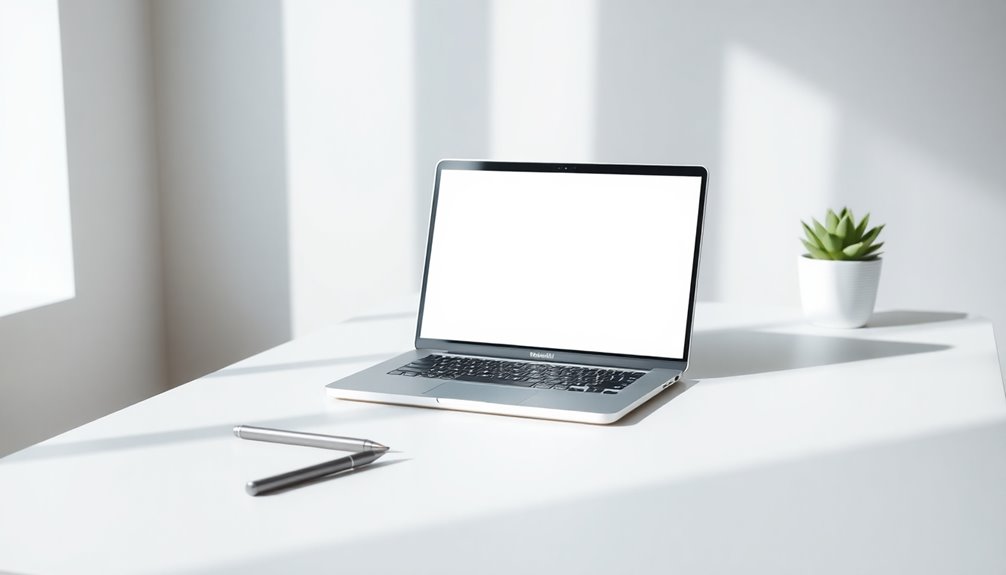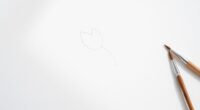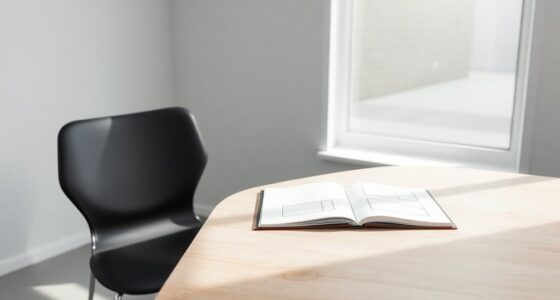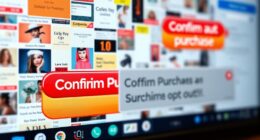Minimalist tools can truly simplify your workflow as a designer. They reduce cognitive load, help you focus on creative tasks, and streamline processes. User-friendly interfaces, like Figma and Notion, enhance collaboration and communication within teams. You'll find that prioritizing essential features leads to faster project management and better design outcomes. Plus, automating repetitive tasks frees up your time for creativity. Discover more about how these tools can elevate your design work.
Key Takeaways
- Embrace user-friendly tools like Notion and Trello to streamline project organization and task management effectively.
- Utilize Figma for real-time collaboration, enhancing communication and design processes among team members.
- Implement time tracking with Toggl to optimize productivity and manage time spent on design tasks accurately.
- Apply the Eisenhower Matrix to prioritize tasks by urgency and importance, improving overall time management.
- Leverage automation features in tools like ClickUp and Zapier to reduce repetitive tasks and focus on creativity.
The Importance of Minimalist Tools in Design
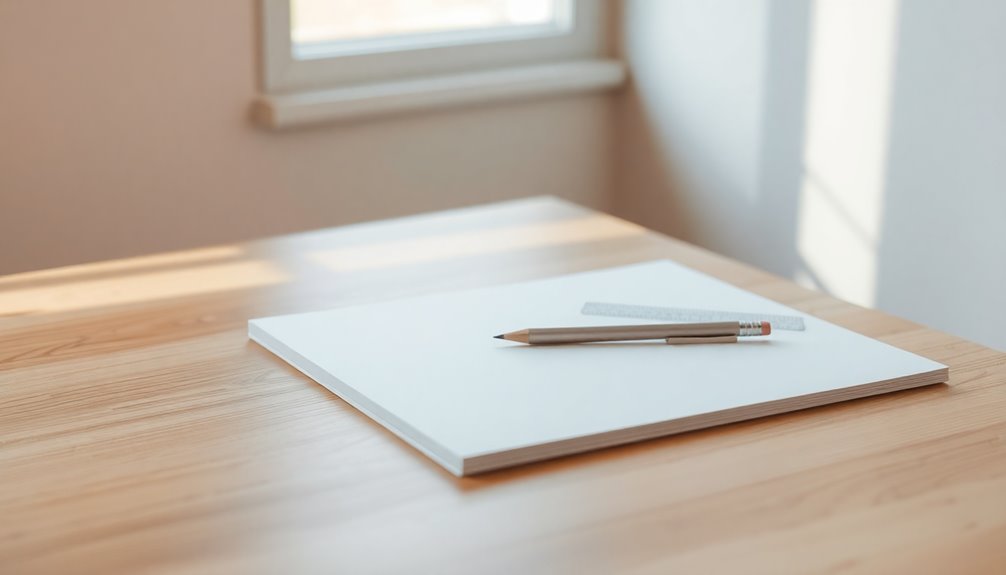
As you navigate the world of design, you'll quickly realize that minimalist tools are essential for enhancing your workflow.
These tools streamline processes by cutting through clutter, allowing you to focus on your creativity without distractions from unnecessary features. With a user-friendly interface, platforms like Canva and Figma simplify navigation, giving you quick access to essential functions.
By prioritizing essential features over complexity, you'll find that these minimalist tools lead to faster learning curves, enabling you to implement designs more efficiently. Additionally, they improve collaboration among teams, emphasizing clarity and communication, making it easier to share ideas and feedback.
Prioritizing essential features fosters faster learning and enhances team collaboration, leading to more efficient design implementation.
Ultimately, using minimalist tools helps reduce cognitive load, allowing you to concentrate on your creative vision and achieve better design outcomes. Furthermore, adopting AI-driven solutions can further enhance your design process by automating repetitive tasks and providing intelligent suggestions.
Essential Productivity Tools for Designers
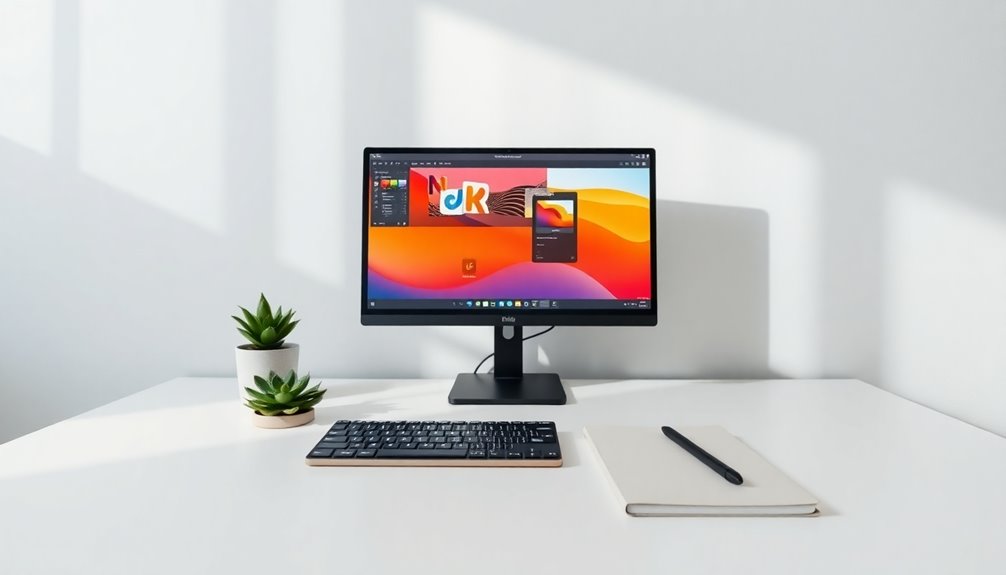
- Notion: Organize project briefs, inspiration boards, and deadlines in a customizable workspace.
- Trello: Utilize a Kanban-style interface to track tasks and milestones effortlessly.
- Figma: Enable real-time collaboration with team members, streamlining the design process with vector graphics editing.
- Toggl: Track time spent on tasks and identify time-draining activities for better time management.
Incorporating these design software and project management tools can greatly improve your team collaboration and workflow efficiency, allowing you to focus on what you do best—designing. Additionally, using AI-driven analysis can help identify which tools are most effective for optimizing your workflow.
Streamlining Project Management With Minimalism
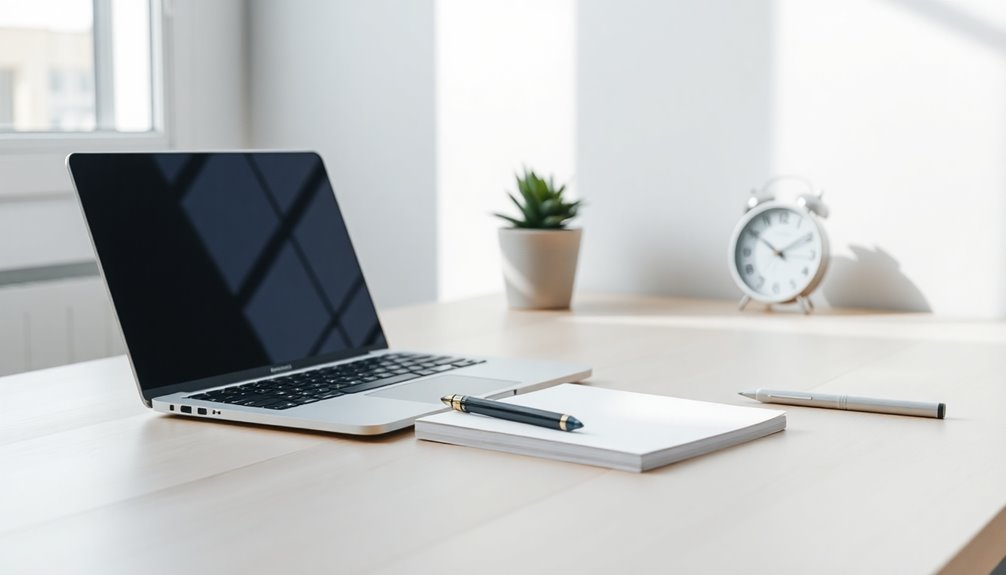
Managing design projects can quickly become overwhelming, especially when cluttered with unnecessary tools and processes. By adopting minimalist project management tools like Trello or Asana, you can enhance task visibility and stay organized.
Utilize automation features in ClickUp or Monday.com to streamline repetitive tasks, freeing up time for your creative work. Implement a Kanban-style approach to visualize progress and prioritize tasks effectively.
Integrating time tracking tools like Toggl with your project management software guarantees accurate billing and better time management, maximizing your productivity. Furthermore, using customizable templates in these minimalistic tools fosters a structured approach, allowing you to adapt to new projects without starting from scratch. Additionally, consider incorporating smart utilities into your workflow, as they can enhance energy efficiency and comfort in your workspace.
Embrace minimalism to elevate your project management game.
Enhancing Collaboration Through Simplified Tools
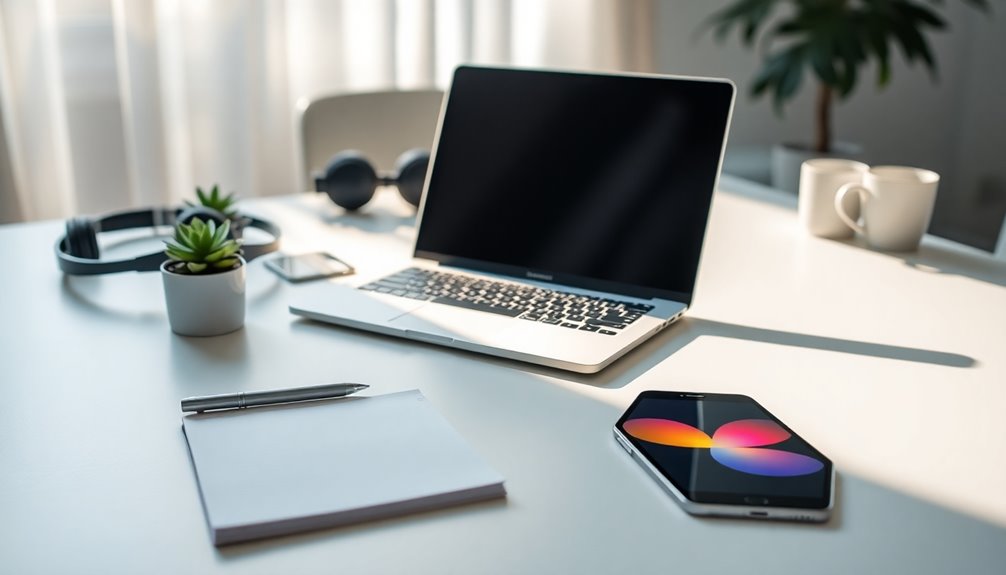
- Use Figma and Notion for real-time feedback and seamless communication.
- Implement Lucidspark and Miro for digital brainstorming and workflow mapping.
- Automate repetitive tasks with Trello and Asana to focus on creative work.
- Integrate Slack and Google Drive with your design tools for centralized communication and file sharing.
These minimalist productivity tools not only prioritize user-friendly interfaces but also reduce the learning curve, enabling your team to adapt quickly. Additionally, incorporating data-driven marketing strategies can enhance your design team's awareness of market trends and client needs.
Minimalist productivity tools emphasize ease of use, allowing teams to quickly adapt and collaborate effectively.
As a result, you create a more collaborative environment that enhances overall project management and workflow efficiency.
Time Management Strategies for Creative Professionals

Managing your time effectively is essential as a creative professional. By prioritizing tasks, scheduling efficiently, and tracking your time, you can enhance your productivity and focus on what truly matters. Additionally, incorporating lighting design into your workflow can help create a more inspiring and efficient workspace.
Let's explore some practical strategies to help you streamline your workflow and make the most of your creative hours.
Prioritization Techniques for Tasks
While juggling multiple creative projects, finding effective prioritization techniques can greatly enhance your time management.
By focusing on what truly matters, you can stay productive and deliver exceptional project ideas. Here are some strategies to evaluate:
- Eisenhower Matrix: Categorize tasks by urgency and importance to focus on high-priority items.
- Batch Similar Tasks: Group like-minded activities to reduce context switching and maintain flow.
- Set Clear Deadlines: Break projects into smaller milestones for accountability and motivation.
- Delegate Tasks: Empower your team by sharing responsibilities, freeing up time for key priorities.
Implementing these techniques will help you stay focused and streamline your workflow, ensuring better outcomes for your creative endeavors. Additionally, applying data-driven decisions can further refine your process by identifying which tasks yield the best results.
Efficient Scheduling Practices
Efficient scheduling practices can transform the way you approach your creative projects, allowing you to maximize your productivity without feeling overwhelmed.
Start by using the Eisenhower Matrix to prioritize tasks based on urgency and importance, ensuring you focus on what truly matters.
Employ time-blocking techniques to allocate specific periods for each design project, minimizing distractions and enhancing your creativity.
Break larger projects into smaller milestones with clear deadlines to maintain consistent progress and accountability.
Regularly review and adjust your schedule to adapt to changing project demands.
Consider using tools like Toggl or Microsoft To Do to keep track of the time spent on tasks, providing valuable insights into productivity and helping you identify time-draining activities. Additionally, conduct quality control tests on your workflow to ensure optimal performance and prevent delays in your creative process.
Time Tracking Tools Overview
Tracking your time effectively can revolutionize how you approach your design projects. Time tracking tools not only help you stay organized but also reveal insights into your productivity patterns.
By utilizing these tools, you can prioritize tasks using data-driven strategies and enhance your focus on graphic design work.
Here are some benefits of using time tracking tools:
- Identify and eliminate time-draining activities
- Seamless integration with project management platforms like Asana and Trello
- Guarantee accurate billing for clients based on tracked hours
- Generate detailed reports to optimize work habits
Additionally, using time tracking tools encourages continuous learning and adaptation which is essential for creative professionals to stay competitive in a rapidly evolving industry.
The Role of Typography in Minimalist Design
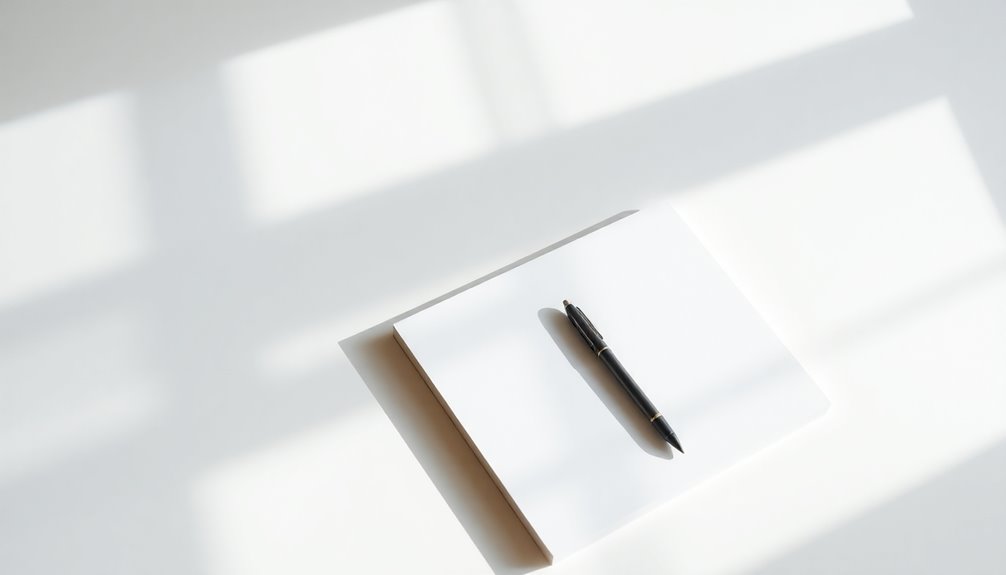
When you're crafting a minimalist design, typography plays an essential role in ensuring readability and visual appeal. Choosing the right font pairings can elevate your design while keeping it simple and cohesive. Additionally, understanding effective preparation can streamline your design process and enhance client satisfaction.
Font Pairing Essentials
While simplicity is at the heart of minimalist design, choosing the right fonts can greatly elevate your work. Effective font pairing not only enhances your design work but also reinforces brand identity and emotional tone.
Here are some essentials to keep in mind:
- Opt for Sans-Serif: These fonts offer a clean, modern look perfect for minimalist aesthetics.
- Use Tools: Leverage tools like FontJoy to find complementary font pairs quickly.
- Maintain Consistency: Stick to a limited number of fonts throughout your project to create a cohesive appearance.
- Explore Customizable Features: Adjust weights and styles to add depth without clutter.
- Consider Typography in Minimalist Design: Understanding this can help you make informed choices that align with your overall design strategy.
Readability and Visual Appeal
Typography plays a pivotal role in achieving readability and visual appeal in minimalist design. When you choose the right typeface, you enhance legibility while aligning with the simplicity that defines this aesthetic. Proper font pairing is essential, and tools like FontJoy can assist you in selecting complementary fonts.
| Aspect | Importance | Example |
|---|---|---|
| Readability | Guarantees clarity | Sans-serif fonts |
| Visual Appeal | Creates emotional impact | Clean layouts |
| Consistency | Reinforces brand identity | Uniform typography |
Opting for sans-serif fonts often improves screen readability, giving your design a modern touch. Remember, consistent typography enhances user experience and keeps your design cohesive.
Automating Repetitive Tasks for Efficiency
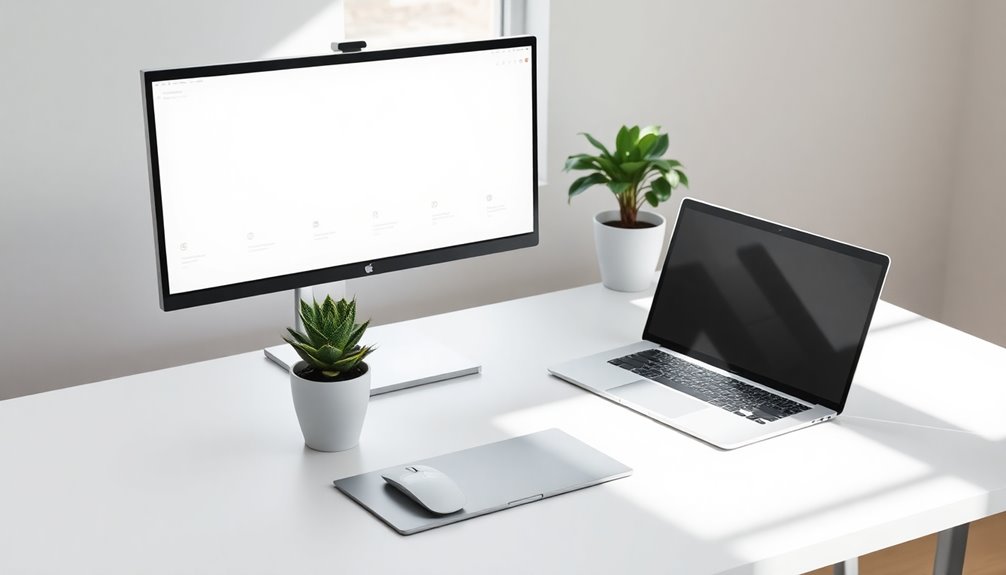
Automating repetitive tasks can transform your workflow, allowing you to dedicate more time to the creative elements of design. By leveraging automation tools, you can greatly enhance efficiency for yourself and your design teams.
For example, consider implementing automation in the following areas:
- File organization
- Client communication
- Project updates
- Data entry
Using tools like Zapier helps connect various applications, streamlining your processes and reducing manual errors.
With productivity boosts of up to 30%, automation allows you to focus on what truly matters—your designs.
Regularly evaluate and refine your automation processes to guarantee they adapt to your evolving project needs, making your workflow more cohesive and effective.
Visual Design Resources to Enhance Creativity
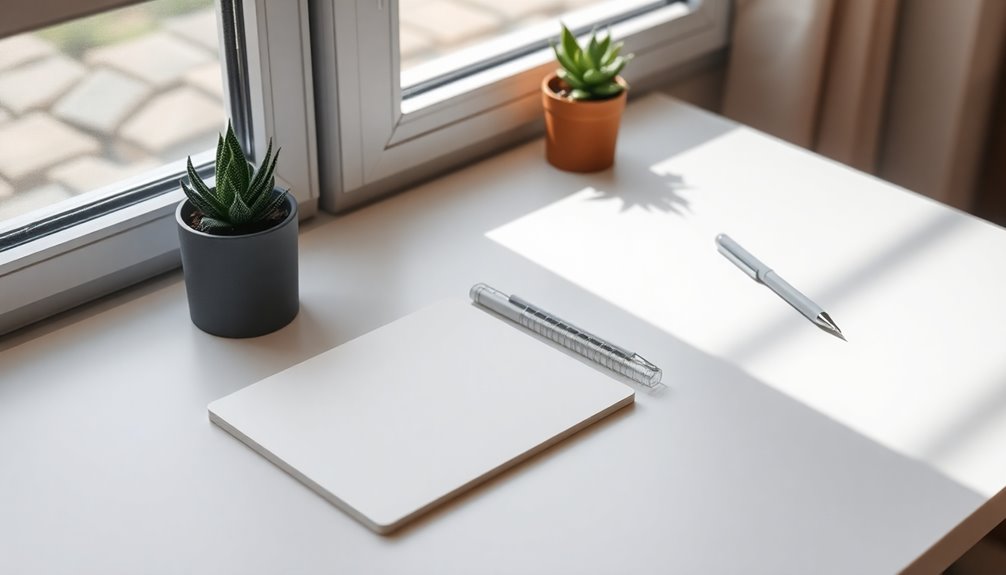
In the fast-paced world of design, tapping into the right visual resources can greatly boost your creativity and refine your projects.
Tools like Mesh Gradient allow you to create customizable gradient images, enhancing your visual imagery without muddied colors.
Undraw provides a library of free open-source illustrations, helping you organize design elements consistently.
FontJoy assists in selecting the perfect font pairs, improving typography choices that impact readability.
For UI inspiration, Mobbin showcases existing products, offering examples that can solve design challenges.
Finally, Design Vault serves as a reference for wireframing new features, aiding you in visualizing product elements and streamlining the design process.
Embrace these resources to enhance creativity and elevate your design work.
Frequently Asked Questions
What Are Some Examples of Minimalist Design Tools?
When you think about minimalist design tools, consider options like Sketch for vector graphics, Figma for collaborative design, or Adobe XD for prototyping.
These tools focus on essential features, reducing clutter while enhancing your creativity. You might also explore Canva for quick graphics or Notion for project management.
Each of these tools emphasizes simplicity, allowing you to streamline your process without overwhelming distractions.
Choose what fits your style and makes your work more efficient!
How Can Minimalism Improve My Design Creativity?
Minimalism can spark your design creativity by stripping away distractions, allowing you to focus on essential elements.
When you simplify your workspace and tools, you create a clear mental space, which encourages innovative thinking.
By using fewer colors, shapes, or textures, you can explore new combinations, leading to fresh ideas.
Embracing minimalism helps you break free from clutter, fostering a more open mindset that often results in more impactful and original designs.
Are Minimalist Tools Suitable for All Design Styles?
Minimalist tools can be suitable for various design styles, but it really depends on your personal approach and the project's requirements.
If you value simplicity and clarity, these tools may enhance your creativity, regardless of the style.
However, if you thrive on intricate details and complexity, you might find minimalist tools limiting.
It's all about finding the right balance that works for you and your unique design vision.
Experiment to see what resonates!
Can I Use Minimalist Tools for Collaborative Projects?
You might think minimalist tools lack the features needed for collaboration, but they can actually enhance teamwork.
By stripping away unnecessary elements, these tools encourage clear communication and focus on what's essential. You can easily share ideas, gather feedback, and streamline discussions.
Plus, their simplicity often makes them user-friendly for everyone involved.
How Do I Transition to Using Minimalist Tools Effectively?
To shift to using minimalist tools effectively, start by evaluating your current workflow.
Identify which tools are essential and which ones clutter your process. Gradually adopt minimalist options that align with your needs, ensuring they enhance productivity rather than hinder it.
Experiment with one or two tools at a time, allowing yourself to adjust. Keep your focus on simplicity and functionality, and don't hesitate to refine your choices as you progress.
Conclusion
By embracing minimalist tools, you're not just simplifying your workflow; you're revolutionizing your design process! These essential resources will free up your creativity, allowing you to focus on what truly matters. With streamlined project management and enhanced collaboration, you'll feel like a design superhero, tackling tasks with lightning speed. So, let go of the clutter and watch your productivity soar to heights you never thought possible. It's time to design smarter, not harder!
